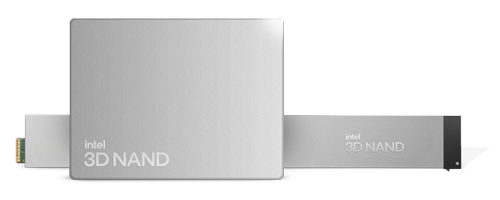
As data volume increases, storage becomes a growing challenge in terms of cost-effectiveness, physical footprint, and performance. Built with Intel’s most advanced Quad-Level Cell NAND, the Intel® SSD D5-P5316 addresses those challenges by delivering industry-leading SSD storage density with the high bandwidth performance of a PCIe 4.0 interface.
Unlock the value of stored data1
Based on PCIe 4.0, the Intel SSD D5-P5316 not only accelerates legacy HDD-based systems, but also prior generation Intel SSD-based systems.
 |  |  |  |  |
| Accelerated access to stored data | Better latency | Reduction of warm storage footprint | TCO reduction | In 1U |
Accelerate a range of data center workloads
The Intel SSD D5-P5316 is designed from the ground up to optimize and accelerate storage in a range of data center workloads. Key architectural improvements accelerate a broad range of read workloads as well as large block sequential/random writes, while maintaining fast response time SLAs. The Intel SSD D5-P5316 can support all write sizes with a Quality of Service improvement scheme that maintains low read latency under write pressure. |
AI | HCI | Cloud Storage | HPC | Big Data | Content Delivery Network |
Features at a glance
|
|
| Intel technologies may require enabled hardware, software or service activation. No product or component can be absolutely secure. Your costs and results may vary. © Intel Corporation. Intel, the Intel logo, and other Intel marks are trademarks of Intel Corporation or its subsidiaries. Other names and brands may be claimed as the property of others. |







